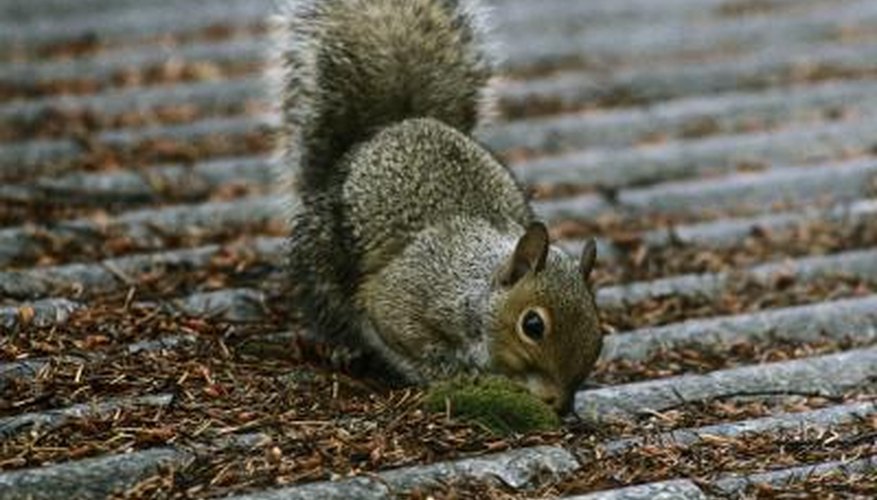Squirrels invade a house's eaves and attic in order to find a safe, dry, and warm place to store food and to build a nest for their young. Since the eaves of a house, or the part of the roof that projects past the outer walls, are high above the ground and relatively easy for a squirrel to access, they become an ideal habitat for these animals, which are arboreal and commonly make their home in trees. Homeowners can evict squirrels from their house using humane methods.
- Squirrels invade a house's eaves and attic in order to find a safe, dry, and warm place to store food and to build a nest for their young.
- Since the eaves of a house, or the part of the roof that projects past the outer walls, are high above the ground and relatively easy for a squirrel to access, they become an ideal habitat for these animals, which are arboreal and commonly make their home in trees.
Determine if the animals in your eaves are indeed squirrels. Squirrels are active during the day, unlike other animals that may infest attics and eaves. You will likely hear scampering and movement during the morning and evening if squirrels have made residence in your eaves. If you have access to your home's attic and eaves, shine a flashlight into the suspected location of the animals during the night hours. If you don't startle the animals you may be able to determine the extent of the invasion and whether babies are present.
Observe the squirrel's route into your eaves in order to set up a humane live animal trap in the best location. Watch for the squirrel shortly after dawn when it leaves the nest to find food. Place the trap near the entry point to the attic or eaves. Since squirrels generally give birth two times each year, once in the early spring and again in the fall, avoid trapping during those times to allow the baby squirrels time to grow and become mobile enough to leave the attic on their own.
Bait the humane animal trap with shelled walnuts or pecans, peanut butter or orange and apple slices. Tie open the door to the trap for a few days so the squirrel is used to feeding in it without tripping the trapping mechanism. When you are ready to relocate the animal, set the trap at a time when you know the animal will feed. Once you catch the squirrel in the trap, cover the trap with a towel or blanket to help calm the animal and relocate it as quickly as possible to an area with enough trees to provide shelter and food. This location should be at least five miles away from your home to prevent the animal's return.
- Observe the squirrel's route into your eaves in order to set up a humane live animal trap in the best location.
- Once you catch the squirrel in the trap, cover the trap with a towel or blanket to help calm the animal and relocate it as quickly as possible to an area with enough trees to provide shelter and food.
Exclude squirrels from re-entering your eaves after eviction by plugging the holes or other entry points used by the animal. Cover the inside of soffit and attic vents with one-half-inch hardware cloth. Keep squirrels away from your roof by trimming overhanging tree branches and placing slit plastic pipe over electrical or phone wires. The pipe will spin on the wire if the squirrel tries to use it as a route to your house.
WARNING
If you trap a mother squirrel who has left a nest of babies under six weeks old in your eaves, collect the baby squirrels by hand and bring them to a wildlife rehabilitator.
